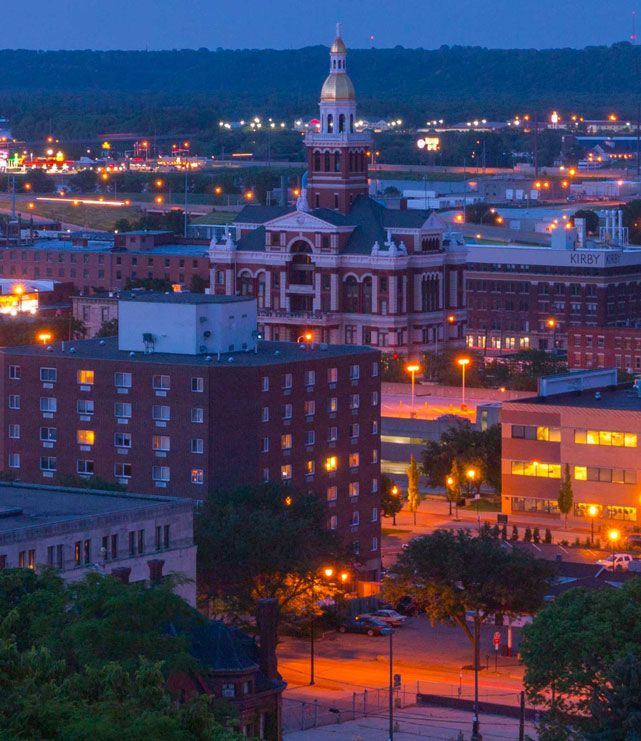Crawford Division: Mechanical
Client: Wells Fargo Bank Building
Challenge: Upgrade Water Cooled Chilled Water System to Air Cooled Chillers
Solution: Provide two 120-ton Air Cooled Trane Chillers, along with associated refrigerant piping and remote evaporator bundles
Project Summary:
Crawford Company provided two 120-ton air cooled Trane Chillers, along with associated refrigerant piping and remote evaporator bundles. The upgrade was needed due to outdated equipment and high maintenance costs. The Crawford solution allows for a more effective and efficient operation. The upgrade will save on maintenance costs and utilities, while providing a more user-friendly operation.
About the Wells Fargo Building:
The building was designed by the Chicago architectural firm of Weary and Alford. It was built by Walsh-Kahl Construction Company from 1926-1927. The new building reflected the significance of the bank in the community. The main building is twelve stories with a steel frame covered with limestone. The lower story façade contains an ornate metal entrance, columns with stylized capitals and recessed Roman arched windows. The rest of the building provides conventional office and residential space. The building is capped by a pedimented temple and a three-story-tall clock tower. The total height of the building is 255 feet (78 meters). A modern parking structure and additional space for the bank was built adjacent to the west side of the building in the 1970s.
The building has retained its original banking room. It is a multi-storied space with an elaborately painted ceiling. The space is lit by the large Roman arched windows on the east elevation. The ceiling is a canopy of groin vaults and is painted in a multi-colored design. A painting by Davenport native Hiram Thompsen of the signing of the treaty between the Sauk and Meskwaki tribes and the US government after the Black Hawk War hangs prominently on the south wall. It was installed in 1928. The original wrought iron teller "cages” remain and the rest of the interior features dark wood and marble elements.









